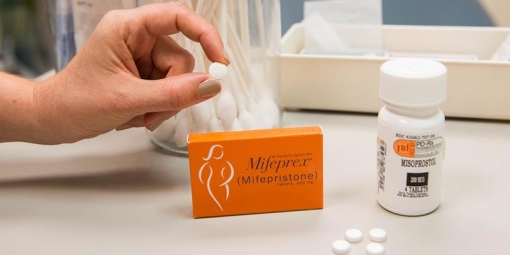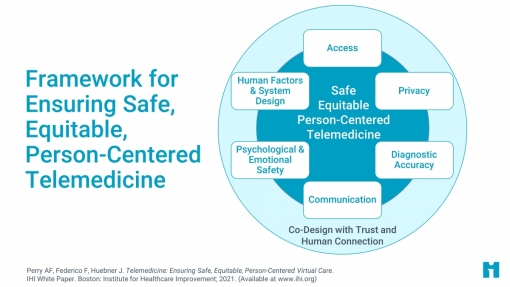Telehealth Use Can Overcome Disparities in Access for Medication Abortion
By Kalani Phillips, MPH, UC Irvine
2022-2023 Student Ambassador Cohort - Center for Gender and Health Justice
June 2, 2023
Threats to medication abortion access are ongoing, and barriers to access persist, including racial, socioeconomic, and geographic barriers. However, one positive result of the COVID-19 pandemic is that access to telehealth broadly increased access to medication abortion. Telehealth became more accessible because it reduced the risk of COVID transmission by decreasing physical contact, and policies changed to allow medication abortion to be provided through telehealth.
The FDA allowed for medication abortion to be prescribed not only by doctors, but also by other healthcare providers such as nurses. No-test medication abortion approaches were widely implemented across states with less restrictive abortion policies, and protocols were put in place allowing for medication abortion pills to be sent through mail-order pharmacy delivery. These changes in medication abortion access reduced travel time and costs, allowing for timely abortion care to be implemented among patients.

In fact, during the COVID-19 pandemic, researchers found that telehealth services significantly reduced waiting times and increased patient satisfaction through decreasing costs, increasing convenience, and increasing comfort. Researchers also noted the convenience of a remote visit and lack of human contact were some of the reasons patients reported a positive experience with telehealth. Additionally, qualitative research studying the motivations and experiences of people seeking medication abortion online found that utilizing online services was a response to clinic access barriers, regardless of restrictive abortion laws.
In a study evaluating the use of contraceptives, awareness of abortion services, and receptiveness to telehealth among women in Puerto Rico, researchers found telehealth to be a useful tool in expanding access to reproductive services, contraception, and education among underserved and/or minority populations specifically. Another qualitative study found that among telehealth medication abortion patients during the COVID-19 pandemic, convenience, privacy, and reduced travel time and costs were positive aspects of their care.
While telehealth is promising in increasing access to healthcare, there are limitations. Legal,regulatory, and reimbursement barriers persist, thereby limiting who can access telehealth services. Other barriers include internet bandwidth speed in rural areas. Despite this, however, research comparing rural and urban telehealth utilization in Missouri found that a rural resident is 4.2 times as likely to use telehealth as compared to an urban resident of Missouri, indicating that access to telehealth may not be an issue in rural populations.
In another study, patients under 30 years of age reported more comfort using telehealth for sexual and reproductive care. However, some participants reported that language barriers could make telehealth difficult. Overall, it was found that telehealth can improve access to reproductive care services, and patients should be provided telehealth through different modes (video, phone, or text).

Technology is evolving all around us and is fundamentally changing the ways healthcare can be delivered. Some individuals have to travel over 8 hours in order to get an abortion. Others may have to walk through a line of protesters that disagree with their choice to terminate a pregnancy. But telehealth has the unique opportunity to help address barriers and overcome disparities in access with medication abortion and other sensitive care. Medication abortion provided through telehealth in different modes (video, phone, or text) can help decrease travel time and costs as well as individual barriers such as language and fluency with technology, regardless of restrictive abortion policies. Previous research mentions that telehealth patients report that they appreciate the lack of human contact because it increases comfort and privacy, indicating that telehealth provides a chance to reduce human biases in healthcare. Furthermore, telehealth has been shown to be helpful in expanding access to reproductive services among underserved and/or minority populations specifically.
References
Aiken, A. R., & Upadhyay, U. D. (2022). The future of medication abortion in a post-Roe world.BMJ, o1393. https://doi.org/10.1136/bmj.o1393
Belluck, P. (2021, December 16). F.D.A. Will Permanently Allow Abortion Pills by Mail.https://www.nytimes.com/2021/12/16/health/abortion-pills-fda.html
Cárdenas-Suárez, N., Ramirez-Santiago, C., Zamora-Olivencia, D., Romaguera, J., Garcia Rivera, E.J., & Vale Moreno, Y. (2023). Telehealth as a potential tool for outreach among women in Puerto Rico. AJOG Global Reports, 3(1), 100156. https://doi.org/10.1016/j.xagr.2022.100156
Cheng, Y., Boerma, C., Peck, L., Botfield, J. R., Estoesta, J., & McGeechan, K. (2021). Telehealth sexual and reproductive health care during the COVID‐19 pandemic. Medical Journal of Australia, 215(8), 371–372. https://doi.org/10.5694/mja2.51219
Gajarawala, S. N., & Pelkowski, J. N. (2021). Telehealth Benefits and Barriers. The Journal for Nurse Practitioners, 17(2), 218–221. https://doi.org/10.1016/j.nurpra.2020.09.013
Grindlay, K., Lane, K., & Grossman, D. (2013). Women’s and Providers’ Experiences with Medical Abortion Provided Through Telemedicine: A Qualitative Study. Women’s Health Issues, 23(2), e117–e122. https://doi.org/10.1016/j.whi.2012.12.002
Khairat, S., Meng, C., Xu, Y., Edson, B., & Gianforcaro, R. (2020). Interpreting COVID-19 and Virtual Care Trends: Cohort Study. JMIR Public Health and Surveillance, 6(2), e18811.https://doi.org/10.2196/18811
Khairat, S., Pillai, M., Edson, B., & Gianforcaro, R. (2020). Evaluating the Telehealth Experience of Patients With COVID-19 Symptoms: Recommendations on Best Practices. Journal of Patient Experience, 7(5), 665–672. https://doi.org/10.1177/2374373520952975
Koenig, L., Ko, J., & Upadhyay, U. (2023). Reaching patients where they are: The role of telehealth abortion care in promoting equitable abortion access. https://preprints.jmir.org/preprint/45671
